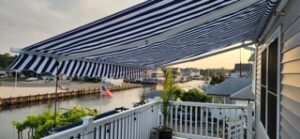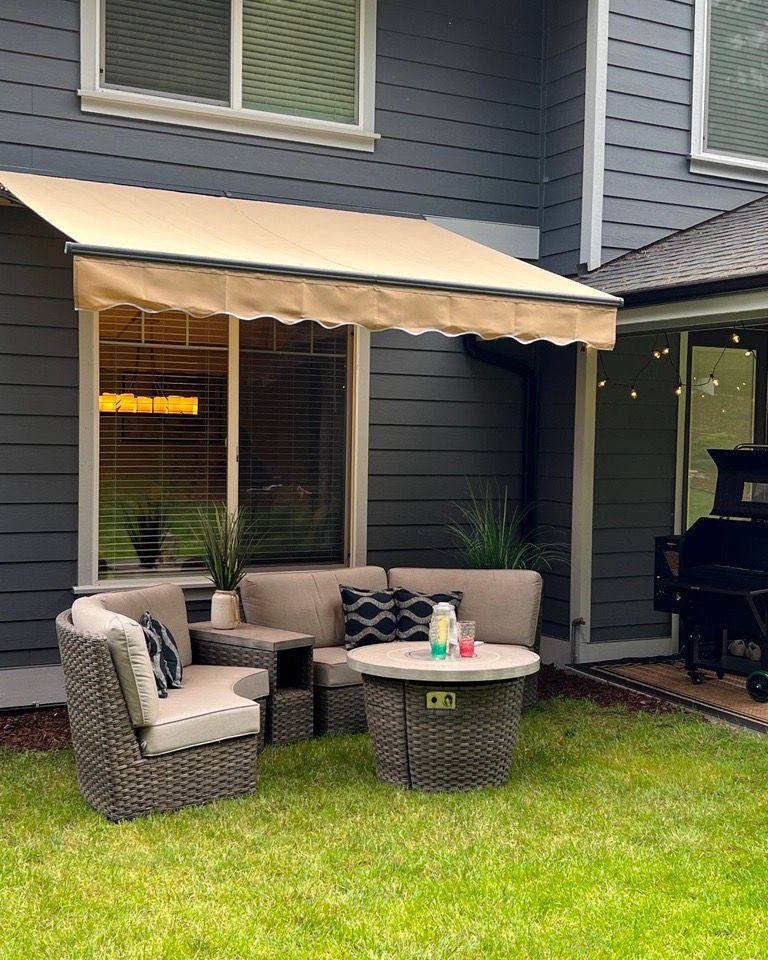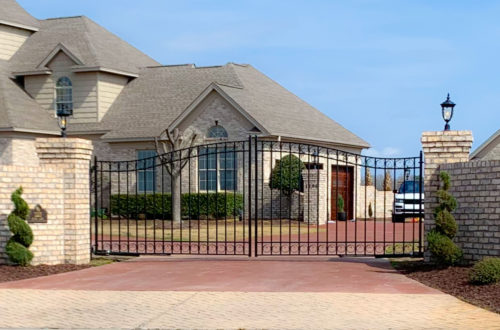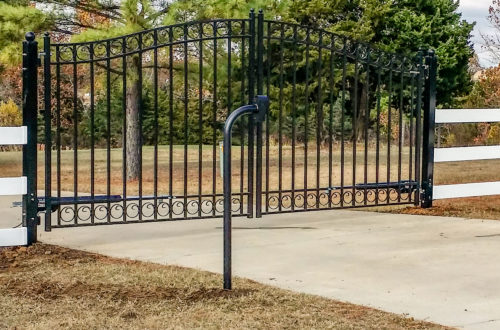There’s nothing more inviting than having your outdoor space fully decked out with lovely furniture and sturdy structures, like pergolas and gazebos, that add that much-needed charm to your open space. But, let’s face it, without the proper care, they’re only going to look dirty and weathered before their time.
Luckily for you, we’ve got some amazing tips and tricks to keep your outdoor furniture and structures in tiptop shape. Say goodbye to the grimy and worn-out look and say hello to a refreshed and renewed outdoor space. This guide is going to teach you everything there is to know on how to clean outdoor furniture cushions, tables, chairs, and more. Let’s get started!
Why is Cleaning Patio Furniture Important?
Your outdoor furniture and structures are exposed to a variety of weather conditions and other environmental factors that can cause significant wear and tear. Ignoring regular cleaning can result in several problems like mold and damage, ultimately leading to a costly repair or replacement.
Regular cleaning and care not only helps to keep the visual appeal of your outdoor furniture, but it also extends its longevity and durability. By routinely removing dirt and debris, you can prevent scratches and other forms of damage that can lead to further deterioration, especially for your more fragile outdoor patio furniture such as your cushions and pillows.
The following environmental factors may cause harm to your outdoor living furniture and fixtures:
Sunlight
When exposed to direct sunshine, materials such as wood, fabric, and plastic can fade, discolor, and gradually deteriorate. UV radiation from the sun can erode protective coatings on surfaces, exposing them to fissures that damage their overall structure.
Rain and Moisture
Excess moisture, whether from rain, dew, or high humidity, may wreak havoc on your outdoor furniture and structures. It fosters the formation of mold, mildew, and rot, all of which can cause the materials in your furniture or building to degrade. Moisture can also induce rust and corrosion on metal components, jeopardizing their structural integrity.
Extreme Temperatures
Have you ever wondered why your furniture starts to look a bit distorted after a few months? Extreme temperatures can cause materials to warp, crack, and even split. This means that a little crack can become a bigger problem later. Furthermore, freeze-thaw cycles, in particular, can be quite dangerous. Water seeps into the tiny cracks, freezes, and expands, causing even more damage to your wood furniture.
Wind and Storms
It’s no secret that strong winds can damage your precious belongings. The sheer force of the wind alone can knock things over or send them flying away, leaving them broken or worse – gone forever. Additionally, the force of the wind can propel debris, which can collide with patio furniture surfaces and cause further harm. During severe storms like hurricanes or heavy rain, use patio furniture protection coverings or bring your furniture inside.
Dust and Dirt
The buildup of dust and dirt can ruin the look of your outdoor furniture and structures. Surfaces can lose their sheen and become unclean over time. Fine particles have a tendency to become trapped in microscopic crevices, which can cause scratching and abrasion when paired with friction from constant use.
Pollutants and Chemicals
Pollutants and chemicals present environmental challenges for your outdoor furniture and structures. Airborne pollutants, like smog and industrial emissions, can take a toll on your surfaces and cause them to lose their luster over time. Moreover, some of your outdoor materials might also be sensitive to substances like chlorine from your pool or fertilizer, resulting in unsightly damage.
Wildlife and Pests
Outdoor furniture and structures are prime targets of wildlife and destructive pests. They can gnaw, nest, and scratch surfaces, leaving marks while also compromising the integrity of your outdoor furniture and structures. Moreover, these creatures can introduce pests that can inflict additional harm to your furniture, causing further damage.
Preparing for Outdoor Furniture Cleaning

Before you start cleaning your outdoor furniture, it’s important to assess the material and structure of your pieces. Understanding what type of material your furniture is made of will help you determine the appropriate cleaning techniques and products to use.
You should not clean wicker furniture the same way you would clean metal furniture. That’s why it’s imperative to identify the material of your outdoor patio furniture before you start the cleaning process. If you’re unsure of the material, check the manufacturer’s instructions or do a quick online search to identify it. Common materials include wood, metal, plastic, and wicker.
It’s also important to pay attention to any instructions from the manufacturer on how to clean your furniture, as some materials may require specific cleaning techniques or products.
Below are some of the common cleaning products used for cleaning outdoor structures and furniture:
- Water
- Mild dish soap
- Soft bristled brush or sponge
- Vinegar
- Baking soda
- Bleach (for certain materials)
- Pressure washer (for certain materials)
- Microfiber cloths or towels
- Protective covers or sealants
Materials for Cleaning Outdoor Furniture and Structures
When it comes to cleaning outdoor furniture and structures, the right cleaning materials can make a big difference. Here are some common items you should have on hand for the job:
1. Water: You’ll need water first to rinse and clean your furniture of any dirt or debris that has gathered on it. You can use a spray bottle or bucket and microfiber cloth for quick spot cleaning.
2. Soap: After you’ve rinsed your outdoor structure or furniture, it’s time to apply soap. Use a mild soap that is designed exclusively for outdoor use. Avoid using aggressive detergents or abrasive cleaners, which might harm the surface of your furniture.
3. Brush: Use a soft bristled brush or sponge to scrub away the dirt and grime from the surface of your furniture. Avoid using metal or hard-bristle brushes, which can scratch or damage your furniture.
4. Microfiber cloths: These soft and absorbent cloths can be useful for wiping down outdoor cushions, which may not be as easy to rinse off with water.
5. Vinegar: For particularly stubborn stains or mildew on outdoor furniture cushions, you can use a solution of equal parts vinegar and water to help break down the stains and remove odors.
6. Pressure washer (for certain materials): If you have sturdy or larger furniture pieces, a pressure washer can be useful for deep cleaning. However, be cautious as high pressure can damage more delicate materials.
7. Protective covers or sealants: To prevent future dirt buildup and protect your outdoor furniture or structures, consider using protective covers when not in use or applying sealants specific to the material.
Note that before you use any of the cleaning materials listed above, be sure to check the manufacturer’s guidelines or instructions first.
How to Clean Outdoor Structures
Outdoor structures such as awnings, gazebos, pergolas, and porches are a fantastic way to enjoy the great outdoors. But with regular use comes inevitable wear and tear, which means it’s essential to keep these spaces clean. Here are a few quick ways you can make them look as good as new.
Pergolas and Gazebos

While there are a few differences between pergolas and gazebos, they both are beautiful outdoor structures that provide shade and enhance the aesthetic appeal of any garden or backyard. Over time, they may accumulate dirt, grime, and debris, which can diminish their appearance and longevity. Regular cleaning is essential to keep your pergola or gazebo looking fresh and well-maintained. In this guide, we will walk you through simple steps to effectively clean your awning, gazebo, or pergola, ensuring they remain a stunning centerpiece of your outdoor space.
Gather Your Cleaning Supplies
Before you begin, gather the necessary cleaning supplies. You will need:
- A bucket of warm water
- Mild dish soap or a pergola-specific cleaning solution
- Soft bristle brush or sponge
- Garden hose or a pressure washer (with a low-pressure setting)
- Ladder or step stool (if required)
- Soft cloths or towels
Prepare the Area
If your pergola or gazebo has any removable accessories, such as curtains, netting, or decorative elements, remove them before cleaning. This will make the cleaning process easier and more thorough.
Clear Debris
Before applying any cleaning solution, remove loose debris, leaves, and twigs from the pergola or gazebo. Use a broom or a soft brush to gently sweep away any dirt or cobwebs. Pay attention to hard-to-reach areas and corners.
Dilute the Cleaning Solution
Add a little bit of mild dish soap to a pail of warm water if you’re using it. Alternatively, if you have a pergola-specific cleaning solution, follow the manufacturer’s directions for the right dilution ratio. Harsh chemicals and abrasive cleansers should be avoided as they might harm the surface of the structure.
Start Cleaning
Dip the soft-bristle brush or sponge into the cleaning solution or soapy water and begin scrubbing the surface of your pergola or gazebo. Work in small sections, applying gentle pressure to remove dirt and stains. Pay extra attention to areas that are prone to mold or mildew, such as shaded corners or areas near plants.
Rinse Thoroughly
After washing a portion, rinse it with a garden hose or a low-pressure pressure washer to remove the cleaning solution. Begin at the top and work your way down, ensuring that any soap residue is thoroughly removed. Excessive water pressure should be avoided since it might harm the wood or other components.
Dry the Pergola
After rinsing, allow the pergola or gazebo to air dry naturally. If needed, use soft cloths or towels to pat dry any remaining moisture, especially on metal or glass surfaces. Avoid using abrasive materials that may scratch or damage the structure.
Reinstall Accessories
Once the structure is completely dry, reinstall any removable accessories that you had taken off earlier. Ensure they are clean and in good condition before putting them back in place.
Porches, Patios, and Decks
Whether you have a wooden deck, concrete patio, or a brick porch, here are some easy tips to get them looking brand new!
First, sweep away any loose dirt and debris with a broom. Next, mix a solution of warm water and mild soap (such as dish soap) in a bucket. Use a soft bristle brush and dip it into the solution and gently scrub the surface of your porch, patio, or deck. Pay special attention to any stains or particularly dirty areas. Rinse with a hose or pressure washer, being careful not to damage the surface.
If you have a hardwood deck, you should also apply a protective coating to keep moisture and fading at bay. There are several sealants and stains on the market, so select one that is appropriate with the wood type and color of your deck. Apply the coating as directed by the manufacturer and let it dry fully before walking or putting furniture on the surface.
In addition to regular cleaning and maintenance, there are a few things you can do to help keep your outdoor surfaces looking their best. Avoid using harsh chemicals or abrasive tools that can scratch or damage the surface. Clean up spills and stains as soon as possible to prevent them from setting in. And finally, consider using furniture pads or outdoor rugs to protect your porch, patio, or deck from scratches and other damage.
Awnings
Assess the Material
Before you begin cleaning your awning, identify the material. Common awning materials include fabric, vinyl, or metal. Different materials and different types of awnings require specific cleaning methods to avoid damage. Consult the manufacturer’s guidelines or seek professional advice if you’re unsure about the appropriate cleaning approach.

Clear Debris
Begin by cleaning any loose material from the awning’s surface, such as leaves, twigs, or dust. Brush or sweep the awning gently using a soft-bristle brush or a broom, giving special attention to folds, seams, and difficult-to-reach spots.
Prepare the Cleaning Solution
For fabric or vinyl awnings, mix a solution of warm water and mild detergent. Avoid using harsh chemicals or abrasive cleaners, as they may damage the awning material. If your awning has specific cleaning requirements, such as a recommended cleaner or treatment, follow the manufacturer’s instructions accordingly.
Test in an Inconspicuous Area
Don’t jump in headfirst, make sure you perform a little spot test in a hidden spot first! Simply apply a small amount of the cleaning solution and wait a few minutes before blotting the area with a clean towel. If there are no stains, discolorations, or any forms of damage, you can continue with the cleaning process.
Apply the Cleaning Solution
Dip a soft-bristle brush or sponge into the cleaning solution and gently scrub the awning in a circular motion. Pay particular attention to areas with visible stains or marks. For metal awnings, use a non-abrasive cleaner specifically designed for metal surfaces and follow the product instructions.
Rinse Thoroughly
After scrubbing, thoroughly rinse the awning with water. Use a garden hose or a pressure washer on a low-pressure setting to remove the cleaning solution and any remaining dirt. Start from the top and work your way down to ensure a comprehensive rinse.
Spot Treat Stubborn Stains
If you encounter stubborn stains, use a specialized stain remover suitable for the awning material. Apply the stain remover to the affected area according to the product instructions and gently scrub with a soft brush. Rinse thoroughly after treatment.
Allow to Dry
After giving your awning a thorough rinse, allow it to air dry completely. Refrain from rolling it up until it’s totally dry to prevent the growth of mold or mildew. Ensure there is proper air circulation to speed up the drying process.
Regular Maintenance
Establish a regular maintenance schedule to maintain them in good condition. Clear away any debris that has accumulated and give them a quick spot clean whenever they require washing. Give your awning a thorough cleaning at least once or twice a year to keep them looking fresh and new.
How to Clean Outdoor Furniture
Before you begin cleaning, identify the material of your outdoor furniture. Common materials include wood, metal, plastic, or wicker. Different materials require specific cleaning methods and solutions. Refer to the manufacturer’s guidelines or consult professional advice to determine the appropriate cleaning approach for your specific furniture material.
Firstly, remove any loose dirt and debris from your furniture. Use a soft brush or a vacuum cleaner to get rid of any loose dirt, dust, and cobwebs. This will make the cleaning process easier.
Next, in a bucket, combine some warm water and dish soap or any other furniture-safe detergent. Scrub your furniture carefully with a sponge or soft cloth dipped in the solution. Cover all surfaces, including the arms, legs, and undersides of the furniture. Using a yard hose or a bucket of water, rinse away the soap suds and then wipe it down with a soft cloth.
Wood
If your outdoor furniture is made of wood, a mixture of equal parts water, vinegar, and vegetable oil can be used instead of soapy water. Clean your furniture gently with a cloth dipped in the solution. The vinegar will remove any dirt or stains, while the vegetable oil will restore the wood’s natural gloss and moisture.
Metal or plastic
Warm water and mild detergent can be used to clean metal or plastic furniture. Scrub the furniture with a cloth or sponge dipped in the solution. You may also use a metal or plastic cleaner that is suitable to use outside.
Finally, make sure that you thoroughly dry your furniture to avoid moisture damage. Wipe it down with a dry towel or allow it to dry naturally in the sun. Remove any cushions or fabric coverings and wash them separately per the manufacturer’s directions.
Don’t forget to establish a regular maintenance routine for your outdoor furniture. Wipe down surfaces regularly to remove dust and prevent buildup and store or cover the furniture during periods of inclement weather, such as heavy rain or snow, to prolong its lifespan. Making use of coverage structures like awnings can also provide a first line of protection against the elements.
Cleaning your outdoor furniture is a simple task that can help to extend its lifespan and keep it looking its best. With these methods, you will be able to help keep your furniture looking fantastic and ready for any outdoor occasion.
Revamp Your Outdoor Space with ALEKO
Cleaning and upkeep are crucial to retaining the quality and appearance of your outdoor living space. But our high-quality furniture and structures make the cleaning process effortless, enabling you to enjoy more time in the great outdoors. Be it a comfy chair to relax in or an outdoor canopy to shelter from the sun and rain, our furniture and structures are designed to stand the test of time.
Don’t compromise on your outdoor experience anymore. Head to ALEKO, your one-stop-shop for quality outdoor furniture and structures that offer durability and aesthetic appeal. Make a lasting investment in your outdoor living space, and create an oasis you’ll be proud to show off to your guests.






